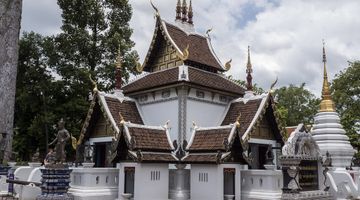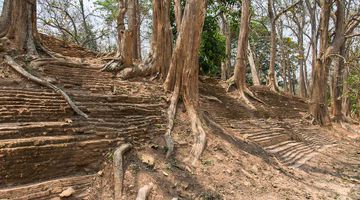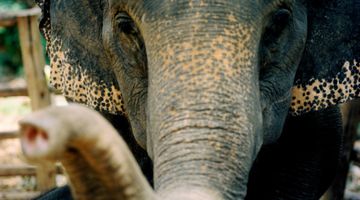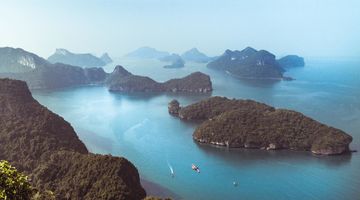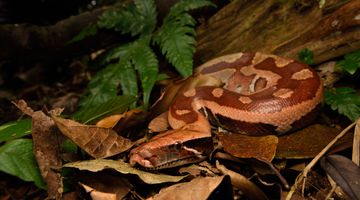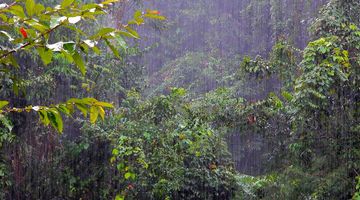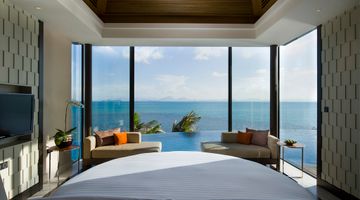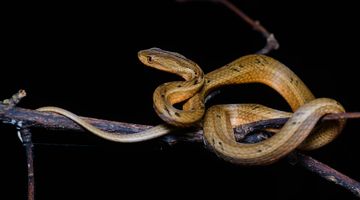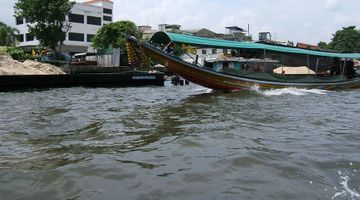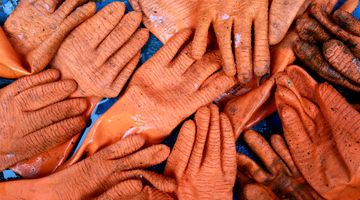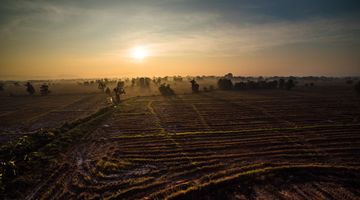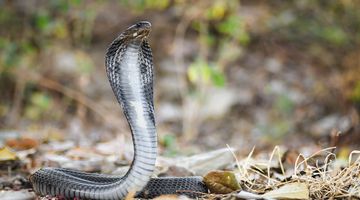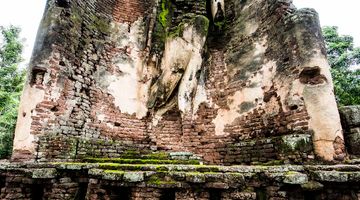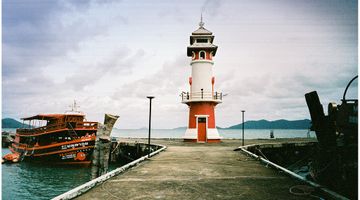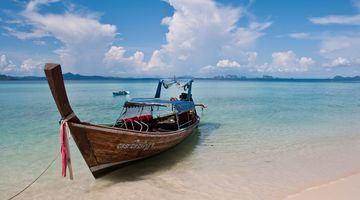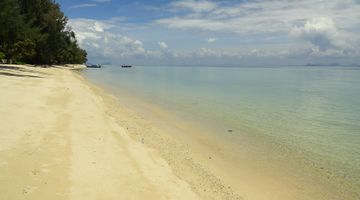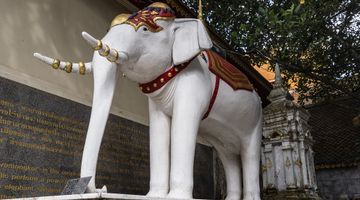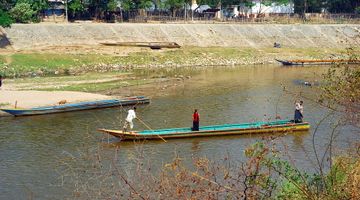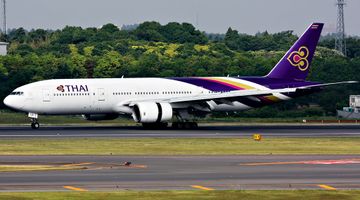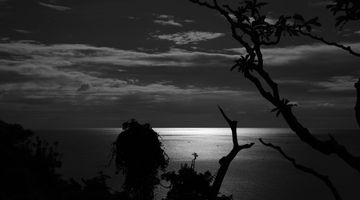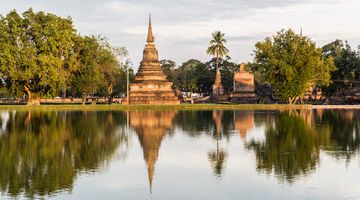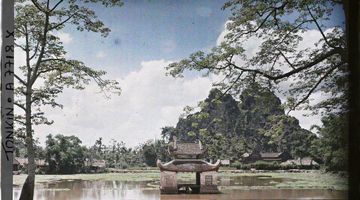Lopburi Sights and POI
All the most important attractions in Lopburi are located in the old town and can be easily reached via a short walk from the train station. If you’re coming here just for a day trip make sure you don’t miss King Narai's Lopburi Palace and the attached Somdet Phra Narai National Museum which unfortunately is closed on Monday and Tuesday. So try to plan your trip on one of the other days of the week.
King Narai's Lopburi Palace
When back in the 17th century King Narai decided to establish Lopburi as his summer residence, a new royal palace has been built close to the river. The architecture reflects the European style of the time, since rather a large colony of Europeans involved in commercial operations with the Kingdom were living there in that period.
French and Italian influences are clearly visible in Gothic arches and extreme care for proportion and details. A series of buildings (now not much more than ruins to be fair) around three separate courts were designed to show the power and wealth of the king in order to impress foreign delegations that were regularly paying visits to Lopburi bringing gifts and donations.
The entrance of the palace is located off Sorasak Road, a 10 minutes’ walk from the train station. Open every day from 7am to 5.30pm.
Somdet Phra Narai National Museum
Some of the restored buildings of the Royal Palace are nowadays housing the beautiful Somdet National Museum (open from Wednesday to Sunday, 8.30am – 4pm, admission fee THB50). The museum has an impressive collection of antiquities, focusing mostly on art and architecture from the Khmer period, but there are also hundreds of items dating back to the 7th and 8th century and from the more recent Ayutthaya kingdom on display. Many Buddha and Hindu images can be seen and there’s a special exhibition with clear explanation boards telling the visitors about everyday life in central Thailand during king Narai’s reign.
Baan Vichyen
Primarily built in the 17th century by King Narai to host foreign ambassadors who were visiting the kingdom (mainly French in this case), the buildings represent a good example of the European style with a predominant use of bricks which was quite unique at the time in Thailand. The construction team was supervised by Constantine Phaulkon, a Greek merchant who became so close to the king that was granted the title of the royal minister, a privilege that never had happened before or after to any other foreigner – all this actually before falling in disgrace, accused of betrayal and executed.
The entrance is located on Rue du France, just a couple of blocks west of the train station. Open every day from 8.30am – 4.00pm. Tickets are THB50.
Phra Prang Sam Yot
These three massive towers (known as prangs in Khmer architecture) are the most recognizable image of Lopburi and can be easily spotted from the train station.
Built during the Khmer domination as a Hindu sanctuary, they represent the Hindu trinity of Brahma, Visnu and Shiva. The sanctuary was later converted into a Buddhist temple during the Ayutthaya kingdom. Nowadays it looks more like a movie set, a post-apocalyptic monkeys’ empire, with hundreds of macaques roaming the ruins, climbing the towers and begging tourists for food. Besides the archaeological importance of the site, it’s definitely the best spot in town to take some bizarre pictures of these funny animals.
The complex is clearly visible from the road, but a THB50 admission fee will get you closer to the action. Phra Prang Sam Yot is open every day from 8am to 6pm.



